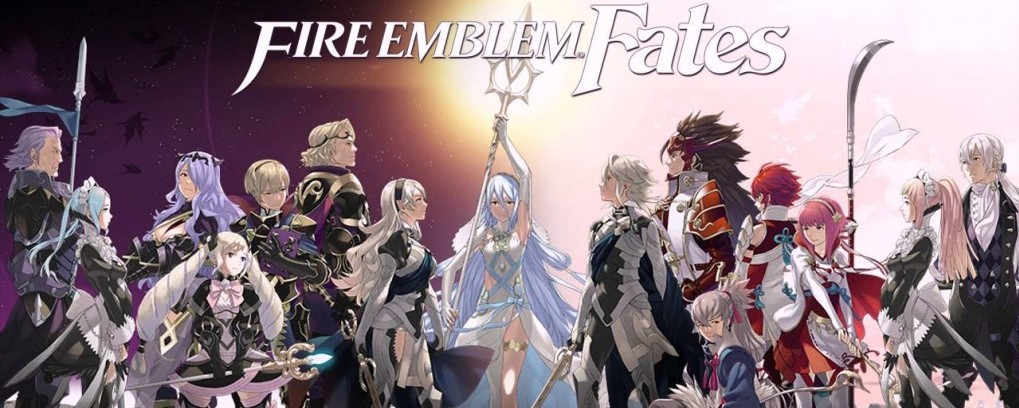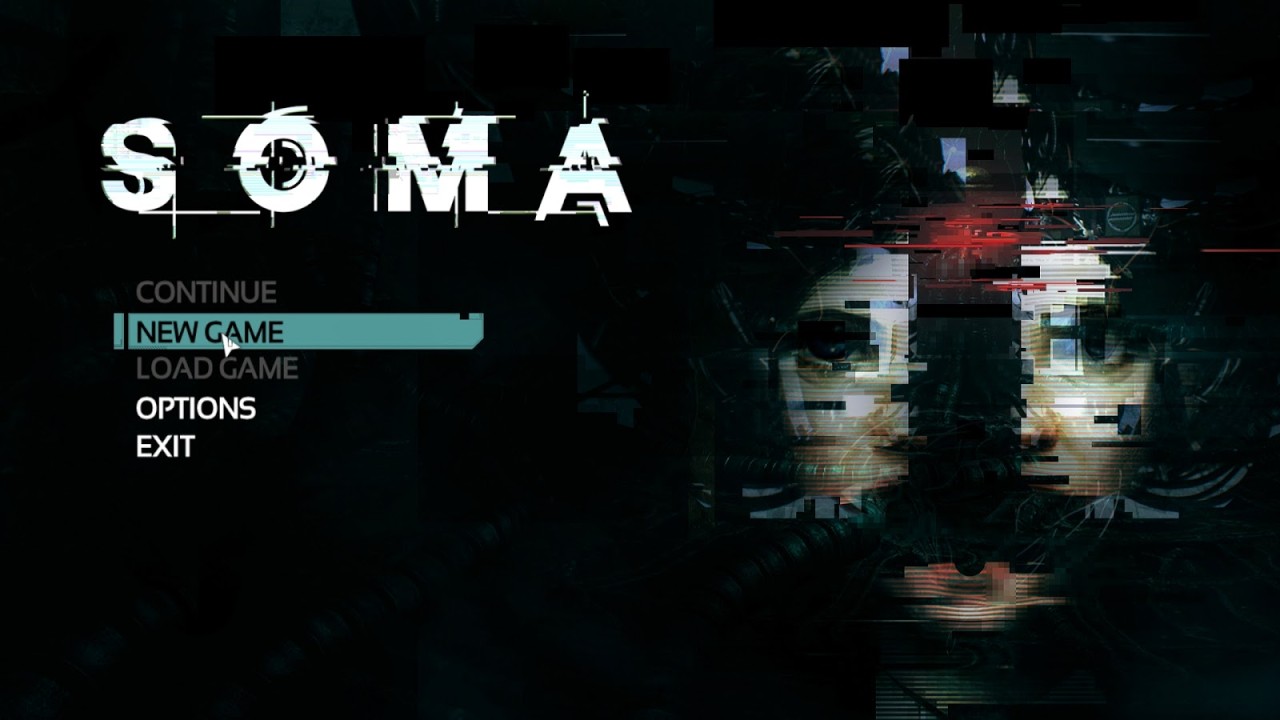When I was a youngling reading ratty issues of Computer Gaming World, I had always seen X-COM referenced as one of those Best Games Ever. Despite hearing nothing but praise for it, I never sought it out, choosing to stick to what few titles I had, close to my comfort zone of RTS and FPS games. But the reverence for X-COM has stuck with me over the years. Now, XCOM is a rebooted and rebranded (sans hyphen) series. With XCOM 2 released a couple weeks ago, I thought it the perfect time to Retrograde the original tactical alien strategy game by MicroProse, X-COM: UFO Defense.
Rather than see this old game to completion, I thought it’d be neat to share a few of my experiences and initial impressions. If what I understood about the series was true, X-COM’s importance on strategic gameplay and permadeath consequences could make it right up my alley.
Welcome to Earth
An evocative opening cinematic set the mood: aliens have begun invading earth, bringing fire and death in their wake, and high-tech X-COM soldiers fight back. It has the charm of an old-school sci-fi action flick, complete with montage cutaways and ‘80s-esque synth track. With that over, I was presented with choosing my difficulty. I wasn’t feeling too confident, as the original X-COM was known for its notorious difficulty. So in the interest of time, and to mitigate a possible high learning curve, I chose the Beginner setting.

The difficulty wasn’t the only thing I wasn’t prepared for, as indicated by this butt-ugly menu. At the time I wasn’t even sure it was a menu, as the menu bars couldn’t be clicked. Since I didn’t have a manual, I couldn’t really tell what exactly I was looking at other than this was a pretty obtuse first screen. I began to fear this world map was the entire game.
Thankfully, I realized I had to select a base before I did anything else, and I chose the good ‘ol US of A. Nothing against other countries, but I’d seen Independence Day and Men in Black enough times to know the choice was pretty much made for me. I then got a prompt to name my base. Now, X-COM came out in 1994. Had I played it back then, I would have been seven years old, so I thought to name my base something appropriate. I went with “FARTLAND.”
Then the game “started.” I say that in quotes because the only indication something had changed was that the timer on the right began ticking up. The menu bars could also be clicked, which offered an abundance of information about the game’s systems. But I didn’t come here to read; I came to whup alien butt in tactical strategic combat. Figuring the game would fill in the details as I went, I ticked up the rate that time would pass. Sure enough, a message soon appeared saying a UFO had been sighted.
Seeing the UFO was one thing; actually pursuing it was a different matter. I stumbled my way through various menus, and eventually sent a fighter plane to intercept the alien invader. Before I could figure out the complex encounter screen, I accidentally disengaged from the fight, and the UFO escaped. I botched first contact.
I sent my interceptor back to base and pondered my failed encounter. There didn’t seem to be any consequence for failing, but I didn’t want it to happen again. My hope that the game would teach me anything began to fade.
I quickly intercepted the next UFO, and by some stroke of luck shot it out of the sky. Now I had the option to inspect the crash site. I sent out the other plane waiting at FARTLAND base and selected loadouts for my X-COM team. The soldiers themselves all look pretty non-threatening with their grey jumpsuits and pixelated faces. But against the extraterrestrial threat, surely it would be actions that mattered, not looks.

A new level loaded, showing my X-COM team lined up inside the Skyranger plane. This top-down, isometric view is what I expected X-COM to look like, and I was heartened to learn the entire game wasn’t going to be using a muddled mess of menus to shoot down aliens and build bases. But my troubles were just beginning.
Space Invaders
As the opening cinematic would have me believe, X-COM is an elite para-military response team, dedicated to meeting the alien threat head-on. But you wouldn’t know that from the way I was commanding them — I fumbled pretty much every initial aspect of troop movement. One guy’s first action against the alien menace was to toss his gun yards away, and it took his entire next turn to pick it up. Another got stuck on the ramp leading off the Skyranger, blocking other units from exiting. In X-COM, every action is spent using a soldier’s individual time units, from moving, picking items up, attacking, even turning another direction. Managing these time units is critical, and I struggled to position my troops and make my way across the map, clearing fog-of-war and trying to find the crash site.
At full-screened 800 X 600 resolution, the game is sluggish and unresponsive — not at all what I’d expect from a game where every movement matters. The mouse cursor staggers across the map, often taking much more time than it should to aim it on the exact square I wanted a unit to go. Thankfully, unit movement can be sped up, so at least I didn’t have to watch my soldier’s agonizing trek towards inevitable death for long.
The menus during tactical gameplay are even more overwhelming than the world map mode. I hesitated to explore them at first because I didn’t want to make decisions that would consume valuable time units, but I got over my fear once I realized the menu buttons were tools to make the best strategic decisions possible. Functions include centering on the currently selected soldier, switching to the next soldier, even cutting away walls to see inside buildings. If I ever got my act together, these buttons would be powerful tools to help me.
Surfing With (And Dying By) the Alien
After lots of positioning and wondering when the game would start feeling more like a game and less like a chore, one of my soldiers found and opened a door leading inside a house. It was there I “spotted” my first alien.
I say “spot” for 3 reasons. 1) The game indicates an enemy has been seen by having a red box show up in the corner. 2) The alien was gray and matched the color of the floor. If that red box hadn’t flicked on I wouldn’t have seen the enemy at all. 3) I had another dude in the same room, but he didn’t see the alien because he wasn’t facing the right direction! It could have been a tough lesson to learn, but the encounter taught me the importance of positioning. Combat is turn-based, but if an enemy is facing you they can and will shoot back. Weapon accuracy is also a big deal, as you get to choose one of three kinds of gun attacks with varying degrees of time unit cost and accuracy. Shots with low time unit costs are less likely to hit but you can do more of them in a single turn, while more accurate shots cost more and can take up the bulk of a soldier’s actions for the turn.
My first encounter left my two soldiers dead — their shots missed, and the alien, because he was facing my units, got to retaliate and successfully killed them. In the past, I would have reloaded my saves until I got the outcome I wanted, but in the interest of seeing as much of the game as possible, I decided to let the dead stay dead. I love games with permadeath because victories feel well-deserved and failures feel all the more crushing. It wasn’t until I killed the alien that killed my dudes that I started remembering my soldier’s names. From then on, I’d make sure the aliens would know the name of Henri Lefevre.
I continued to make my way through the houses, checking corners with my newfound knowledge of facing directions. I started feeling more comfortable with troop movement, and the successful attack on the alien had me feeling pretty confident. I set up a pincer attack at the crash site with a heavy weapons and a rifleman, but I stopped on the wrong place and got my rifleman killed. I moved Yoko, my heavy weapons soldier, in for a revenge kill, but she didn’t have enough time units to shoot. I saw Throw was the only action I could take, and it had a 76 percent accuracy rating to boot! Thinking Yoko would throw a grenade, I accidentally had her throw her gun instead. I hadn’t learned much after all.
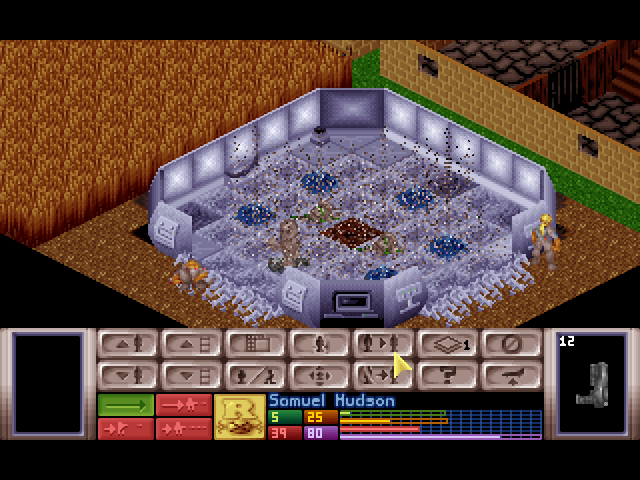
The alien missed, and I sent in my remaining soldiers. I positioned one in what I thought was an ideal shooting range, but for reasons completely unknown to me he wouldn’t fire. I ended the turn, the alien killed one more of my units, I retaliated, and the match ended. I got a mission rating of “poor.”
Second Contact
I came back to the world map, otherwise known as the “now what?” stage of trying to figure out how to get aliens to land. The tactical part is the most interesting part so far (as a seven-year-old I probably would have been bored stiff by the world map part), but I felt I was missing a key component of what made X-COM a classic. I explored the menus some more, discovered some of my soldiers had leveled up, and found a deep base management element to the game. I learned that funding and income is earned from how successful each mission is and how responsive I am at answering threats (I suddenly became very conscious of my “poor” rating from last time), as well as a kind of relations status with other countries across the world. I began to wonder if I should build a new base, but decided against it in favor of reinforcing FARTLAND. I bought some scientists instead and began to research a plasma rifle.
After some more waiting, I got another UFO notice. Ship combat was still baffling to me at this point, but I shot the alien down somewhere in New Mexico. How appropriate.
In the tactical map, I saw the aliens right away, but they were too far to shoot. I didn’t have enough time units to get my units off the Skyranger and get to cover, so I settled for diminishing the fog of war and ended my turn. Immediately I was fired upon from BEHIND, and the faraway aliens shot at me too. They missed, but it taught me I could still shoot at faraway enemies.
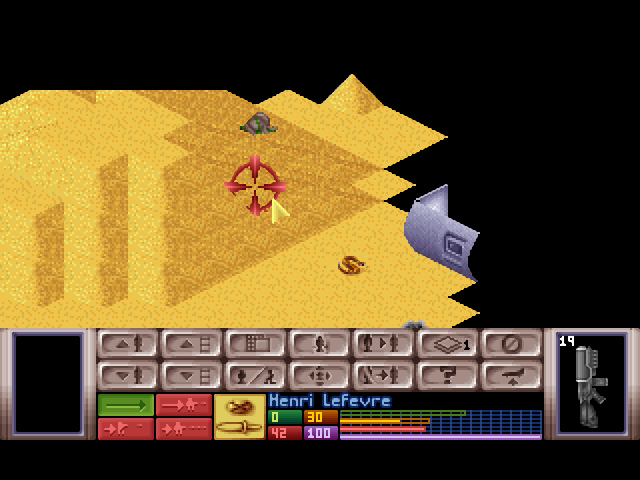
I began fanning out, making all the typical mistakes of overextending and running out of time units, and before long I found myself surrounded by little grey men. Henri, the hero of the last game, took an Aimed Shot at one of them, which consumed all of his 49 time units. When it hit, I felt the kind of satisfaction you only get from high-stakes gameplay like this. Connecting difficult shots like those when under pressure is what makes even an arduous campaign like playing the original X-COM feel worthwhile. I made a follow-up feel-good attack with Samuel Miller, another veteran, who fired off two low cost, low accuracy Snap Shots, killing another enemy. One of the newbs, Astra, went on to kill an alien as well, and I started feeling pretty good about my chances.
I’ve played enough brutal strategy games (not too many, but enough) to know that overconfidence can be a real killer. Combined with a limited number of time units per turn, and I had to make some pretty timely strategic maneuvers. For example, when Astra came across yet another alien enemy, I was confronted with a decision: I had enough time units to shoot twice and risk missing, or I could shoot once and retreat behind cover using my remaining units. I opted for the second and much safer option, and Astra went on to kill the alien the next turn without exposing herself to enemy fire.
To close out the mission, I collected the alien bodies and weapons to take back to FARTLAND, searched the map, and, upon failing to find an entrance inside the downed spacecraft, I sent the team home. This was the screen I got:

One thing I want to note is that the game doesn’t do anything to make successes feel rewarding; it’s purely on the player to master the game’s systems to get any sort of fun from it. For example, the game didn’t tell me to recover alien bodies and artefacts; I did that on my own. I also picked up my fallen comrades’ bodies (when I had enough dudes leftover to do so), even if it had no clear benefit for me. It just felt like the right thing to do.
At this point I began to understand what the game wanted from me. I pulled research off the plasma rifle (which was going poorly) and put my scientists on a plasma pistol, which I had actually recovered. I built an alien containment facility, thinking I could use it to research all the corpses I brought back. But despite figuring out some pretty mission critical elements of this game, some things still remained beyond my comprehension. The base management stuff seemed intuitive, but I was really just guessing. This guesswork began to take its toll on me, and after a few more missions of putzing around without any real progress, I decided I’d had enough.
Exiting X-COM
X-COM is hard — as hard as people said it was. The highs of pulling off a difficult operation are still very much a part of what, in my opinion, still makes this a compelling game. But much of what I found difficult had little to do with the gameplay itself. Despite the meaningfulness I may have projected on the game, X-COM‘s sluggish controls and archaic menus are a real bummer. Since I haven’t played the later games in the series, I didn’t feel much obligation to continue seeing what I’ve been missing out on. I’m usually all about grinding games out to completion, but this just felt like a lot of work for too little reward. Maybe if I’d consulted the manual more often, I’d have gotten more mileage from X-COM.
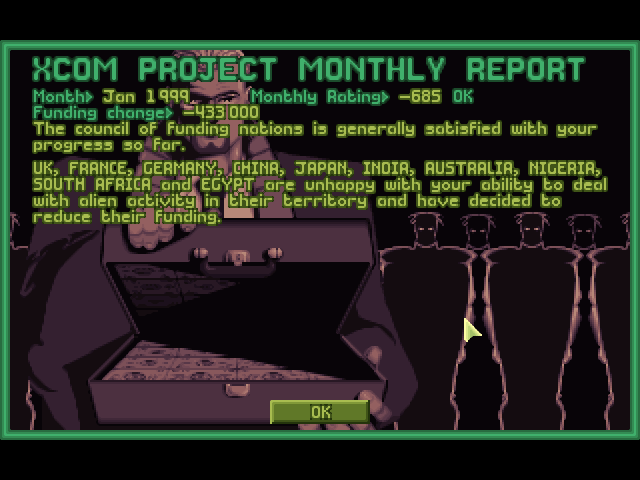
I can appreciate now how X-COM, despite its high learning curve and obtuse collection of menus, didn’t dampen my enthusiasm with a tutorial. I had to figure everything out on the battlefield — no doubt how a real X-COM soldier would have to do it, relying on instinct to slug it out against the earthbound invaders. That said, I don’t think the levels I played were scripted, despite the way the tension and stakes felt like they raised after each mission. Maybe it was something in the algorithms, or maybe the maps were procedurally generated, as they are in the sequels. Not to mention how additional challenges, such as funding, were rolled out as levels progressed. These would make for difficult obstacles in the quest for the defense of the planet. Either way, kudos to the old boys at MicroProse for gradually ramping up the demands the games asks of you in order to learn the ropes.
With Retrograded, I love going back to the earliest entry in a series, and I usually like finishing what I’ve begun. However, this is one interstellar adventure I don’t think I’ll be picking up again. Considering how well the modern releases have been received, I’m confident the best parts of X-COM live on. For me, I think this one is best forgotten. Someone get me a neuralizer.
Retrograde: Last encounters With the First Kind






